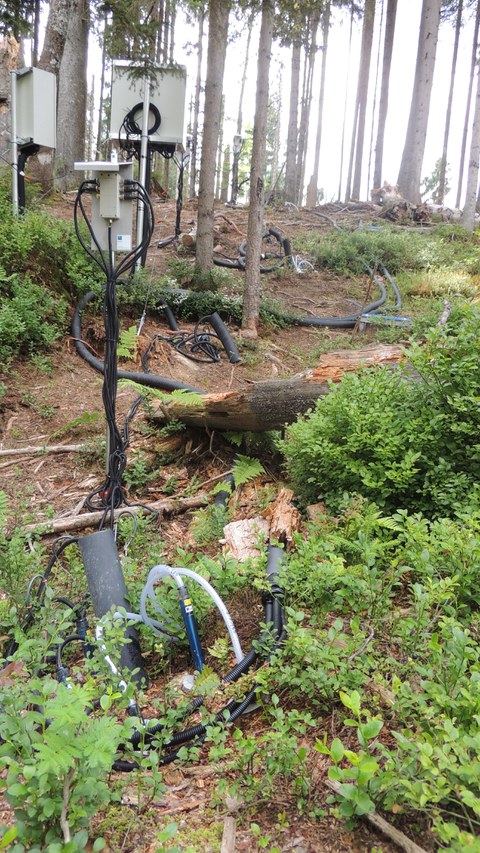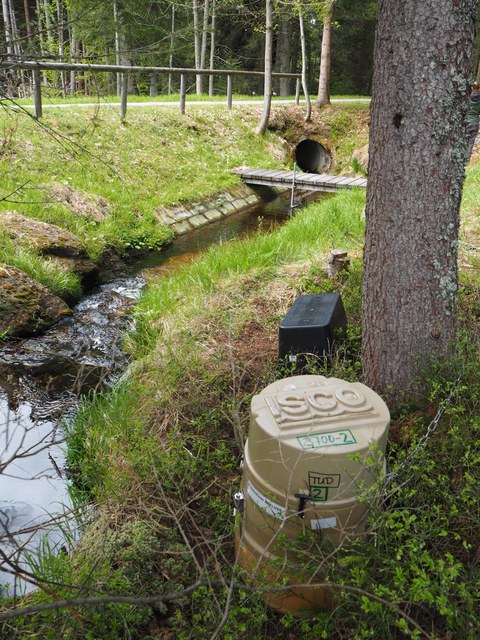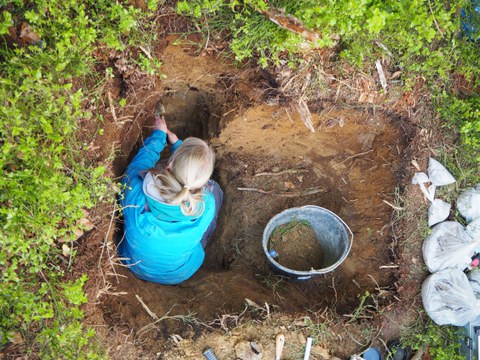JUNIOR RESEARCH GROUP ON THE INFLUENCE OF NATURAL FACTORS ON THE CONCENTRATION, QUALITY AND EFFECT OF DISSOLVED ORGANIC CARBON IN THE BAVARIAN FOREST NATIONAL PARK
Sub-project: Hydrological modelling to predict DOC mobilization with a focus on flood genesis
Dissolved organic carbon (DOC) concentrations are increasing in many surface water bodies around the world which has adverse effects, e.g. on drinking water quality and aquatic ecosystems. This project is part of an interdisciplinary junior research group to investigate the natural processes of DOC mobilization and their effects on the aquatic communities in the catchment of the river Große Ohe in the Bavarian Forest National Park. The aim of this project is to understand - and eventually predict - the spatial and temporal dynamics and the bio-chmical composition of DOC exports from the Große Ohe catchment and the associated effects on the macrozoobenthos communities. The process-based research tools developed in the project will be tested for its transferability to other regions.
DOC is discharged from catchments along hydrological pathways which leads to high DOC concentrations in the runoff, especially during flood events. Here, the genesis of the flood wave in the river and the runoff composition play an important role, particularly the areas where the flood originates, the flow paths and the residence times. But these processes are yet not fully understood. In particular, the effects of small-scale processes, such as preferential flow paths on hill slopes or the influence of microtopography, have so far been little investigated. These processes can play an important role in the DOC mobilization. To examine these processes more closely, field experiments are conducted on a hillslope in the headwater catchment of the Große Ohe river and the dynamis of runoff processes are investigated on the (sub-)catchment scale. In addition to collecting hydrological data, various hydrological tracer methods using the stable water isotopes d2H and d18O as well as geochemical tracers are used for analyzing runoff processes. Coupling the experimental methods with nested mathematical modeling will help to identify the runoff -contributing areas in the catchment, hydrological flow paths, and residence times of the water in the catchment. With the insights gained here, scalable prognostic models for the flood genesis and DOC mobilization are developed. These models don't require the detailed data aquired for the pilote catchments of the Große Ohe river and will be transferable to other catchment with similar properties.
| Duration | December 2018 - November 2022 |
| Funding by |
|
| Network Partners | |
| Additional information |
https://www.nationalpark-bayerischer-wald.bayern.de/forschung/projekte/juniorforscher.htm |
| Staff |
|



